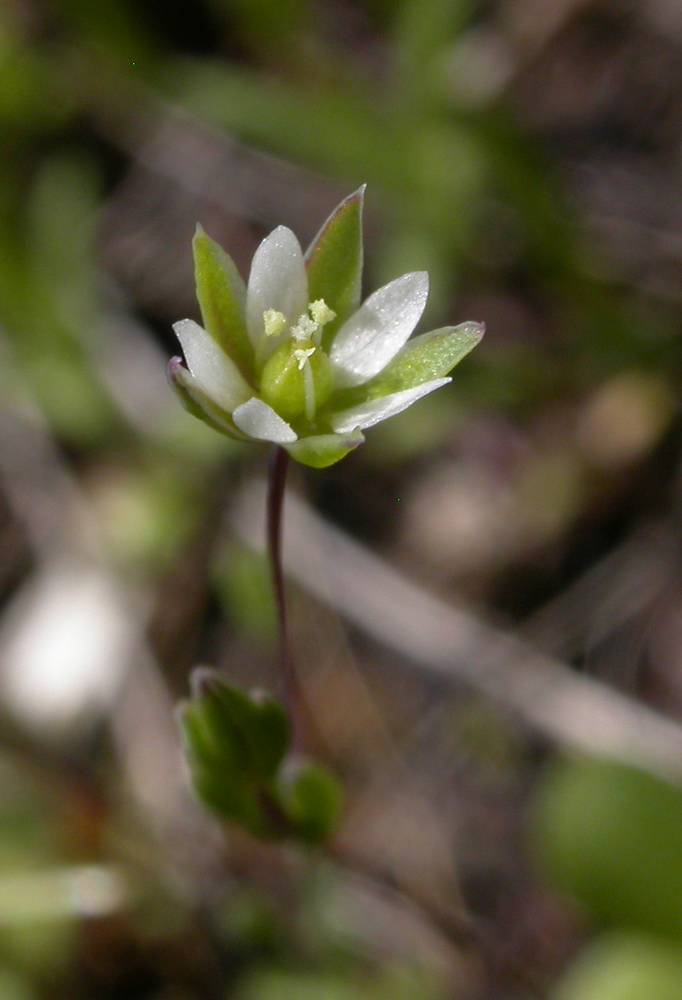
Plants annual; taproots thread-like.
Stems spreading to erect, 1–5 cm, slender, simple or branched, green, glabrous.
Leaves subulate to lanceolate, 1.5–5 × 0.2–1.5 mm, straight, flexible; veins generally 1, often faint.
Inflorescences 2–9-flowered; pedicels glabrous.
Flowers sepals 1.5–3.5 mm, glabrous, veins 1, or 3, faint, only near base; petals 0.5–1 × length of sepals or 0.
Seeds reniform, 0.4–0.7 mm, purple-brown, papillate, not winged.
Sandy meadows. Flowering Apr–May. 50–1700 m. Col, Lava, Owy, Sisk. CA, ID, NV, WA; north to British Columbia, CO. Native.
A minute plant, S. pusilla is often overlooked.
as described under Minuartia pusilla
Plants annual. Taproots threadlike. Stems spreading to erect, green, 1-5 cm, glabrous, inter-nodes of all stems 2-10 times as long as leaves. Leaves not overlapping, irregularly spaced, connate proximally, with loose, mostly herbaceous sheath 0.2-0.3 mm; blade ascending to widely spreading, green, concave proximally, flat distally, obscurely 1-veined, awl-shaped to lanceolate, 1.5-5 × 0.2-1.5 mm, flexuous, margins not thickened, scarious throughout or proximally, smooth, apex green or purple, acute to obtuse, flat to navicular, often shiny, glabrous; axillary leaves absent. Inflorescences 2-9-flowered, open cymes; bracts subulate, herbaceous, margins scarious proximally. Pedicels 0.1-0.5 cm, glabrous. Flowers: hypanthium disc-shaped; sepals 1-veined, or weakly 3-veined in proximal 1/ 5, ovate to lanceolate (herbaceous portion lanceolate to narrowly so), 1.5-3.5 mm, not enlarging in fruit, apex green or purple, acute to acuminate, not hooded, glabrous; petals narrowly lanceolate, 0.5-1 times as long as sepals, apex narrowly acute, entire, or absent. Capsules on stipe ca. 0.1 mm, ± ovoid, ca. 3 mm, equaling or longer than sepals. Seeds brown or reddish, asymmetically reniform with radicle prolonged into beak, not compressed, 0.5-0.6 mm, minutely papillate.Flowering spring-summer. Plains, pine barrens, dry rock cliffs; 50-2400 m; B.C.; Calif., Idaho, Nev., Oreg., Utah, Wash.